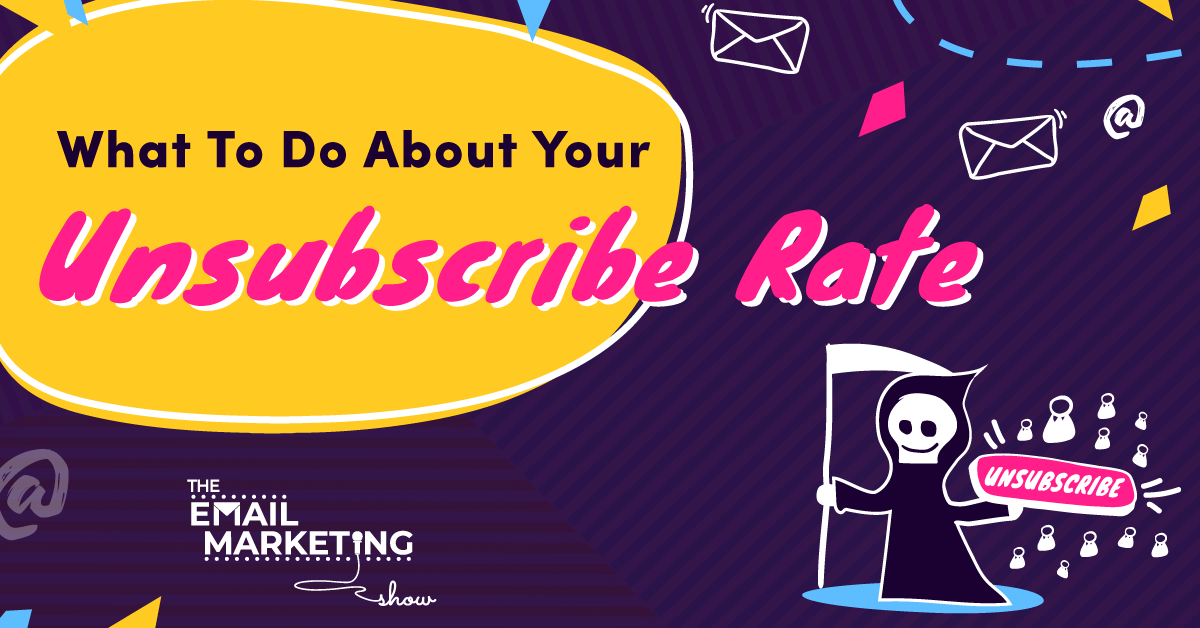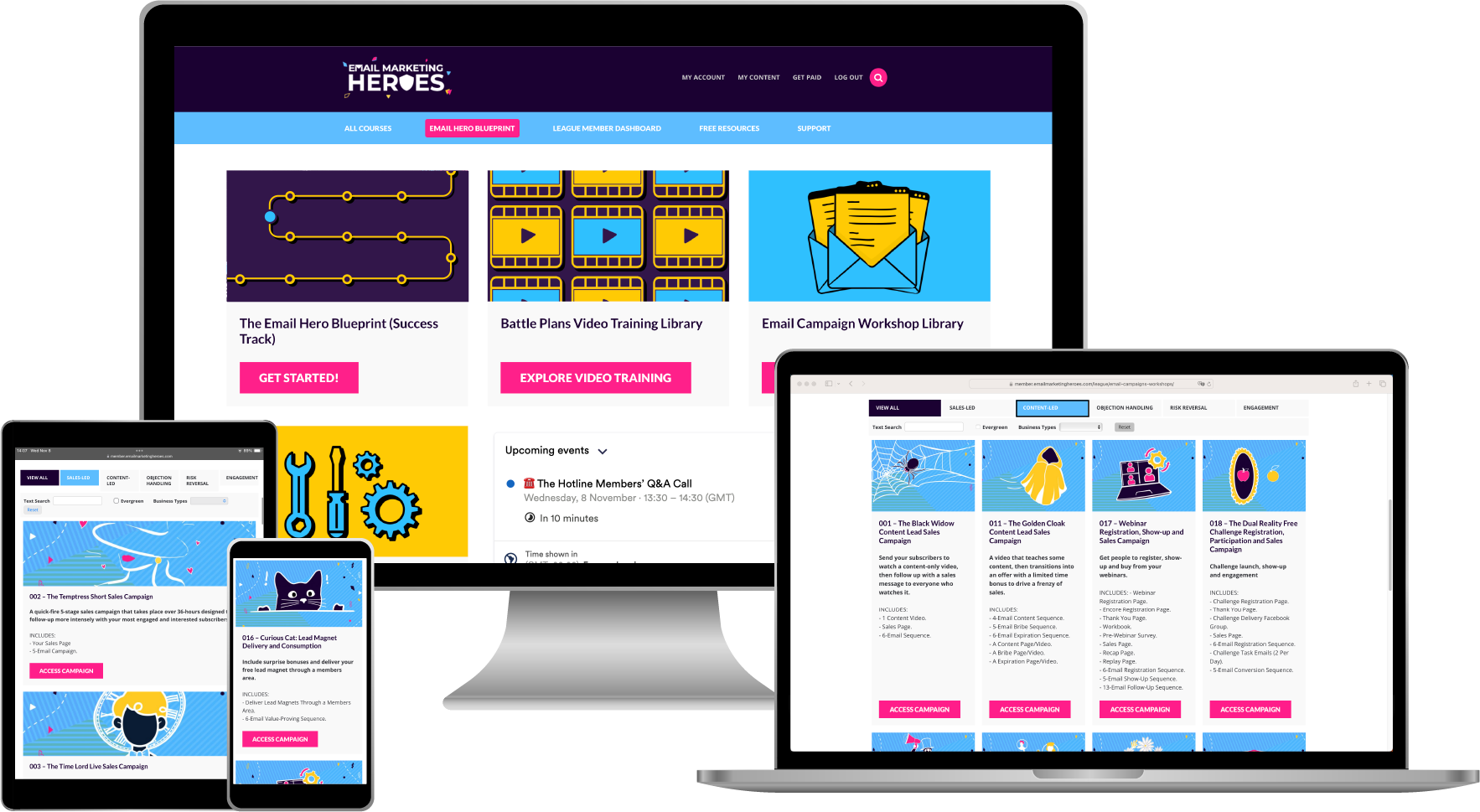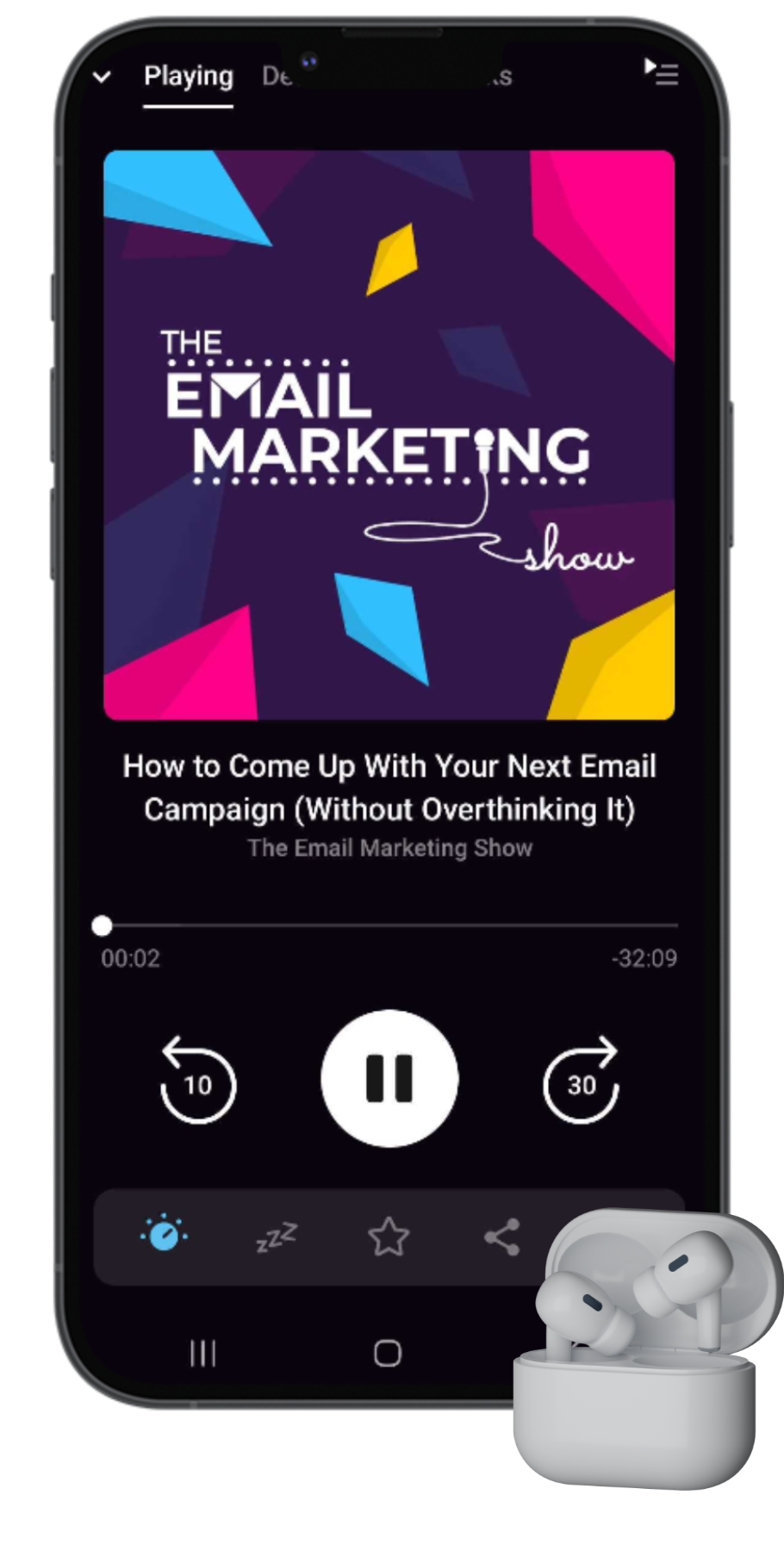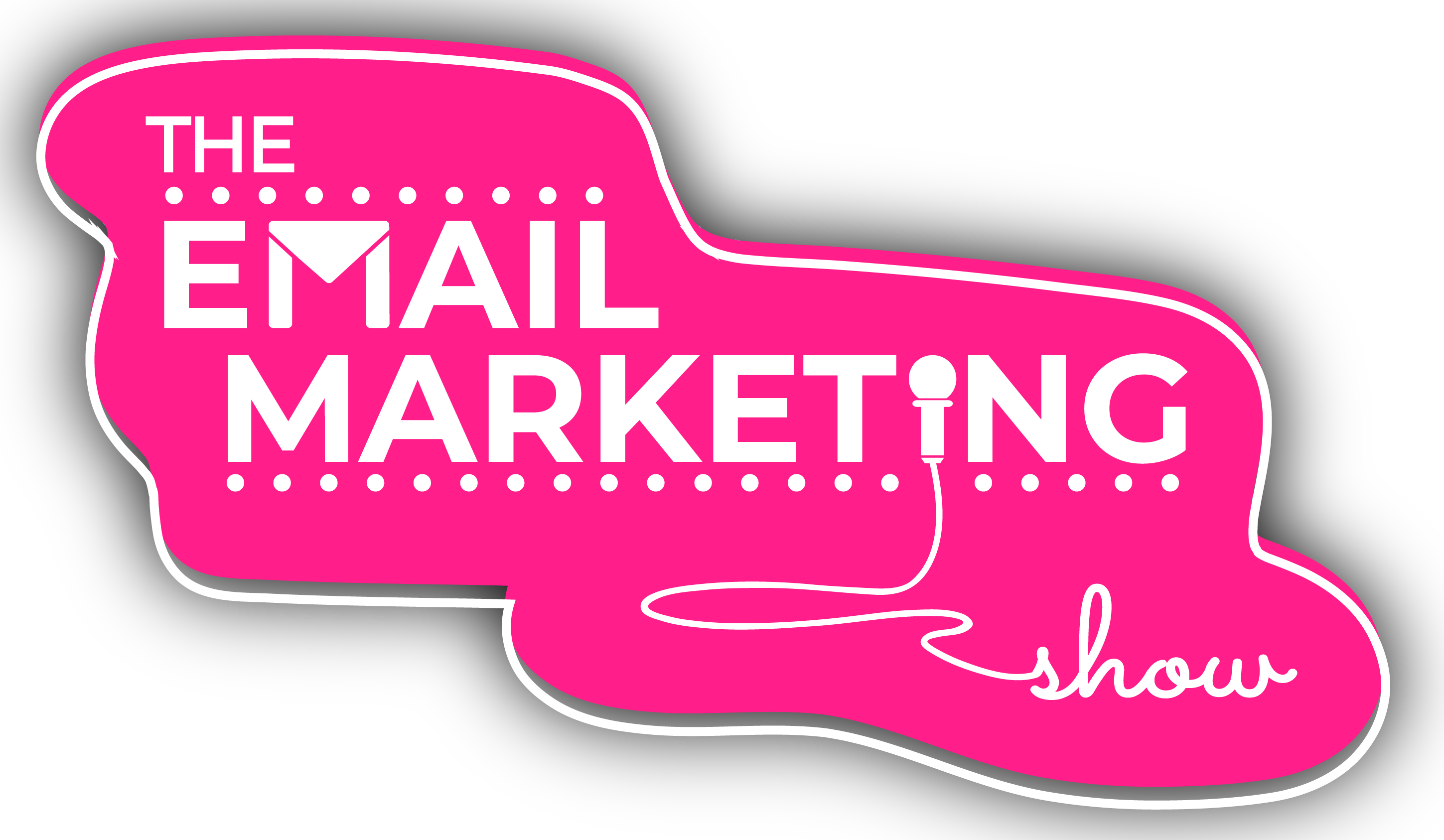
What to do if you have a high unsubscribe rate
What do you do if you have a high unsubscribe rate? What is a high unsubscribe rate, and does it even matter? Or should we simply focus on addressing any spikes in unsubscribers instead?
We hear so many people telling us they put in a lot of work to build their list just to see their subscribers leave pretty quickly. And we know it's easy to feel bad about it, but if you find yourself in this situation, fear not! There's quite a bit you can do about it.
Ready to find out?
SOME EPISODE HIGHLIGHTS: (4:48) Unsubscribers aren't a bad thing! (6:55) Why you can't just rely on your lead magnet. (8:41) How to make sure people want to hear from you. (12:48) Why use a Welcome sequence. (14:39) Why monitor your unsubscribe rate. (18:31) What to check when you have a high unsubscribe rate. (21:41) Have you made any changes to your email marketing? (22:51) Why always include offers in your emails. (25:15) Build a list of subscribers, not hostages! (26:53) Subject line of the week.
Unsubscribers aren't a bad thing!
Here are a few things to think about when it comes to unsubscribe rates – the impact they have on your technical email deliverability, your relationship with your list, and your business. Because broadly speaking, unsubscribers aren't a bad thing, especially when it comes to your emails getting delivered.
Just for a second, imagine you have a massive mansion. You decide to have a housewarming party, and instead of just inviting your friends, you tell everyone who lives within 100 miles of your new place. So they all come, but the thing is – you don’t want most of these people there. In fact, you probably want them to leave! Because ultimately, you only want to hang around the people you actually like. And the same goes for your business. You want to build a list of people you like and who like you.
Why you can't just rely on your lead magnet
High unsubscribe rates are typical of the way we build our lists. And they're definitely part of the course when we use lead magnets. If you’re running ads or employing any other quick-win list-building strategies, you need to come to terms with the fact that a lot of people don’t want to be on your list – they just want your lead magnet.
So they’ll opt in for the thing, get it, and then quickly unsubscribe because they don't care much about hearing from you. But one way of fixing this is to make sure you have a long-term nurture sequence.
For example, if you join our list because you’ve listened to a few podcast episodes or have been in our Facebook group for a while, you’ve been nurtured into our world. That means you are subconsciously and psychologically committed to remaining on our list because we've built a relationship with you over time. It’s a totally different experience from someone you've never heard of before who signs up to a lead magnet.
How to make sure people want to hear from you
A good solution to help with this is asking people to join your email list because they want to hear from you however many times you email them every week. That way, your emails become the thing people are signing up for. And that should reduce your unsubscribe rate. Plus, it means that people are expecting emails from you. It's not just you suddenly sending them sales emails after they downloaded your lead magnet.
You see, we also lose a good number of subscribers quite early on in our email journey. But this isn’t something unique to email marketing – it happens everywhere. Think about networking events or work meetings, for example. There aren’t that many people that you meet that you find interesting enough to keep in touch with or want to see again. And even out of those people, only a smaller percentage become meaningful to you.
What this means is that you want to build a list of people who are good, responsive, and ideal subscribers. As we always say, you have to kiss a lot of frogs! You need to accept you'll have a lot of people come into your business who won't hang around for very long. And that's okay because the goal isn’t to build the biggest list that you can. Your subscribers aren’t Pokémon – you don't have to catch them all.
What you need is something in place that makes people hang around long enough to turn into raving fans. And if you can't do that, then it's okay if they leave. Hopefully, the percentage of people who leave immediately is small, and more people will instantly become fans and feel they want to stay on your list because it's the right place to be for them.

The Top 10 Books To 'Power Up' Your Email Marketing
10 book recommendations that will improve all areas of your email marketing (including some underground treasures that we stumbled upon which have been game-changing for us).
Why use a Welcome sequence
This is why we created out Getting To Know You sequence. It’s our version of a welcome campaign or indoctrination sequence (which is a phrase we don’t like). The way we look at it is that people come into your business, and you’re getting to know them as much as they’re getting to know you. The idea is that you gather data on your subscribers to find out how you can serve them better. And at the same time, they get to find out why you’re unique and why they should hang around.
When people unsubscribe from our list during the course of the four days of the Getting to Know You sequence, it’s because they realise they’re not that interested in email marketing right now – it’s not their priority. Maybe they just wanted to dip their toe in the water.
In our Getting To Know sequence we tell people we're going to email every day with a hint, tip, story, idea, or piece of inspiration to help with your email marketing. If you’re in that phase of your life, you’re going to hang around and love it – you'll feel instantly committed. But if you’re not, you’re going to unsubscribe. And that’s okay.
And people might still come back later. This happened to us recently when someone got in touch to say they had subscribed and unsubscribed a few times. But eventually, they joined our membership The League. But they only did that when the time was ready. So don’t be needy and cling to people. Just serve who you want to serve – some people will hang around and others will come and go.
Why monitor your unsubscribe rate
There are some times when you want to be observant of your unsubscribe rate – you don’t want to be ignorant or arrogant about it. And if you're someone who's taken our advice to increase the frequency of your emails, you might notice that when you did that, a bunch of people unsubscribed from your list. But that figure levels off eventually. So after that, you want to look out for sudden spikes of unsubscribers.
When those happen, it’s time to investigate. Was it a particular email? Was it an email automation? Or was it what we call a train carriage (which is a particular sequence of emails) that is getting people to leave? Is there something you're doing that people hate? If you spot anything happening that's affecting your unsubscribe rate, you have a chance to go and fix it. And that's what's great about automation – it allows you to go and fix something for the future.
So we advise that you do an email audit. Because email marketing is such a priority for our business, we do an audit once a month. If you’re busy, you might just want to do one every 90 days or once a quarter.
And what you do is look at a few different things in your email engine. For example, we look at what campaigns we have running and check the stats inside our email marketing platform to see if any of our campaigns are getting a ridiculously high unsubscribe rate. Should you rely on those metrics? Yes, because they're all tracked within the email marketing platform and therefore are accurate (unlike open rates).
What to check when you have a high unsubscribe rate
So what do you do if you find a particular email or a campaign that's causing you issues? Here's a quick checklist of things to check.
The subject line
Sometimes people feel tricked by subject lines. Or maybe they feel offended. Is there a disconnect between the subject line and the content of the email? We know this is often not done maliciously. But we've seen it done on purpose too. In other words, does the subject line not fit the email? Have you caught people's attention with something to make them open the email but then taken a different direction in it? Because that could cause people to unsubscribe.
Your lead magnet
What's the lead magnet someone signed up for when they joined your list? Is there a big gap between what they downloaded and what you email them about? If so, it might be time to ditch that lead magnet. This is one of the things we talk a lot about inside our membership The League, where we give you training to help you create lead magnets that will make sales for your business. You don't want your lead magnet to sound appealing as a standalone but then prevent your subscribers from turning into customers!
Your traffic source
If you see a high unsubscribe rate, where are the people who unsubscribe coming from? How did they join your list? You can see where they are coming from by checking the contact record in your email platform. Do they all come from the same place? Is there something you need to change in that particular acquisition channel or method?
Have you made any changes to your email marketing?
For example, has someone started writing your emails for you? Have you changed your email platform? Does the unsubscribe link at the bottom of your emails look any different? Have you changed your email signature? Have you created new offers? Changed your branding? Have you suddenly started talking about things people aren’t jamming with? Have you changed the layout of your emails? Added pictures? Taken stuff out? Have you changed anything at all that could have caused your subscribers to leave?
Why always include offers in your emails
Let’s just remember that every single time we send an email, someone will leave. It's the nature of the beast. And that's because they’ve decided that for whatever reason, they don’t want to hear from us anymore. So every time someone leaves, that’s going to cost us. And that's fine.
But we might have paid to get those people into our world in the first place. That could be through running ads or doing content marketing, for example. So every time someone leaves our list, it costs us. And that's the reason why we rarely send an email that doesn’t have an offer in it or doesn’t sell something. Because when we send an email, people are going to leave, and you want to recoup that cost. You want to make some sales to cover the cost of losing some subscribers.
Build a list of subscribers, not hostages!
Generally speaking, unsubscribes are not a bad thing. If you notice a spike in your unsubscribe rate, by all means, check it out and do something about it. But at the end of the day, you want to build a list of subscribers, not hostages. Unsubscribes aren't the worst thing because you can make a shit tonne of money by sending emails to people who want to hear from you.
And that's key. Build a small tribe of people who really want to hear from you and keep them highly engaged. A small but engaged list makes delivery and relationship-building easier. It also makes your list more profitable because it costs you less to host it.
So unsubscribers aren’t the worst thing in the world unless they’re out of the blue and unusual. If you notice a spike, do something about it. But otherwise, don't worry too much about them. And if you want to find out more about this (and how we do things) check out our membership The League.
Subject line of the week
This week’s subject line is “How to get FREE flowers”. So with this subject line, Rob did two things you’re not supposed to do, apparently. (But that's only if you believe the stories that are told out there in the email marketing world!). Rob used the word FREE in the subject line and also put it all in block capitals. In theory, these things will damage the delivery of your emails. And if you do everything else wrong, they actually might.
But why does this subject line work? Because it's a benefit-driven subject line but has nothing to do with what we teach. We rarely have benefit-driven subject lines that work. Things like “How to get more people on your email list” never tend to work well for us. So this is taking the “How to” benefit-driven structure that we know works in headlines and applying it to something that has nothing to do with email marketing and everything to do with the story that Rob shared in the email. Try it out!
Useful Episode Resources
Related episodes
Why You Shouldn’t Worry About Your Unsubscribe Rate.
7 Essential Email Campaigns Examples For Your Business.
How To Use Email Subject Lines To Do More Than Get Your Emails Opened.
FREE list of the top 10 books to improve your email marketing
If you want to write better emails, come up with better content, and move your readers to click and buy, here's how. We put together this list of our Top 10 most highly recommended books that will improve all areas of your email marketing (including some underground treasures that we happened upon, which have been game-changing for us). Grab your FREE list here.
Join our FREE Facebook group
If you want to chat about how you can maximise the value of your email list and make more money from every subscriber, we can help! We know your business is different, so come and hang out in our FREE Facebook group, the Email Marketing Show Community for Course Creators and Coaches. We share a lot of training and resources, and you can talk about what you're up to.
Try ResponseSuite for $1
This week's episode is sponsored by ResponseSuite.com, the survey quiz and application form tool that we created specifically for small businesses like you to integrate with your marketing systems to segment your subscribers and make more sales. Try it out for 14 days for just $1.
Join The League Membership
Not sick of us yet? Every day we hang out in our amazing community of Email Marketing Heroes. We share all of our training and campaigns and a whole bunch of other stuff. If you're looking to learn how to use psychology-driven marketing to level up your email campaigns, come and check out The League Membership. It's the number one place to hang out and grow your email marketing. Best news yet? You can apply everything we talk about in this show.
Subscribe and review The Email Marketing Show podcast
Thanks so much for tuning into the podcast! If you enjoyed this episode (all about what is a high unsubscribe rate and what to do if you see a spike) and love the show, we'd really appreciate you subscribing and leaving us a review of the show on your favourite podcast player.
Not only does it let us know you're out there listening, but your feedback helps us to keep creating the most useful episodes so more awesome people like you can discover the podcast.
And please do tell us! If you don't spend time on email marketing, what do you really fill your working days with? We'd love to know!






